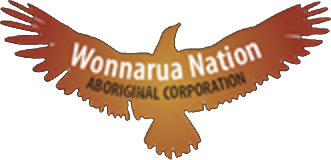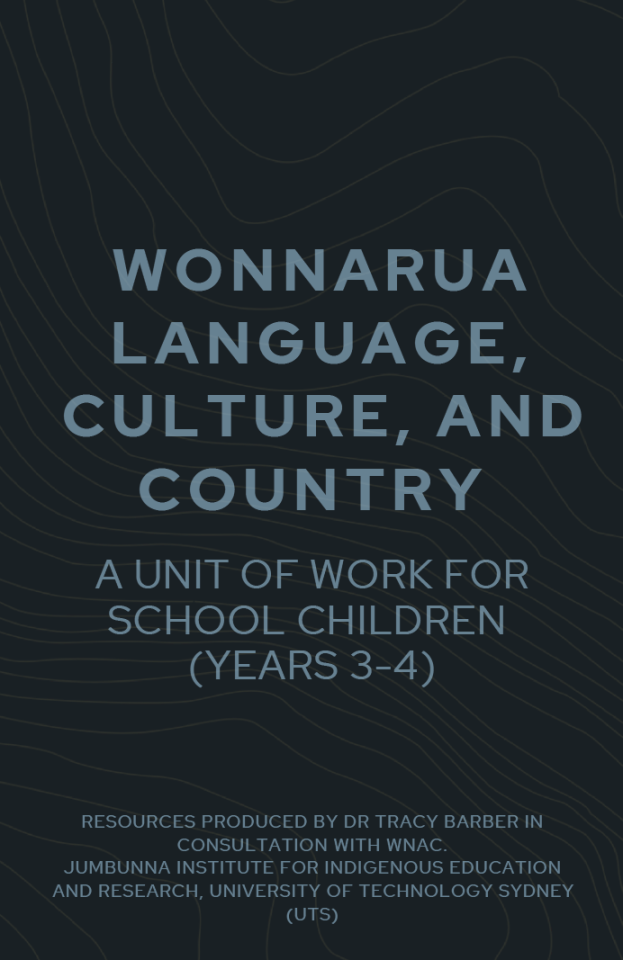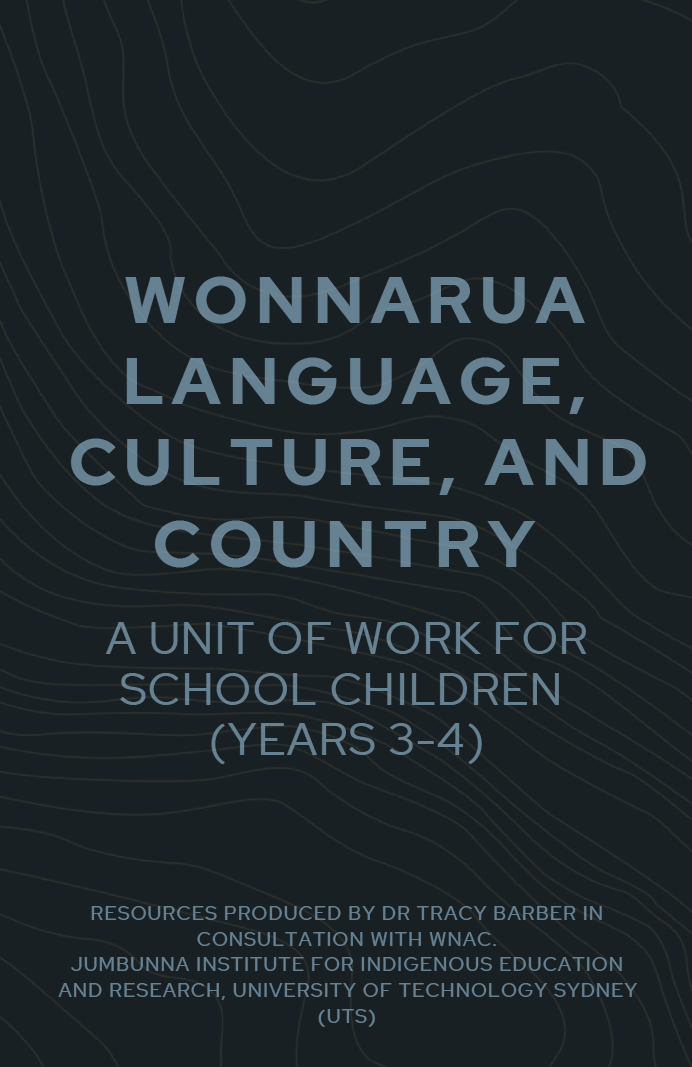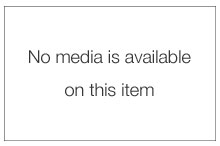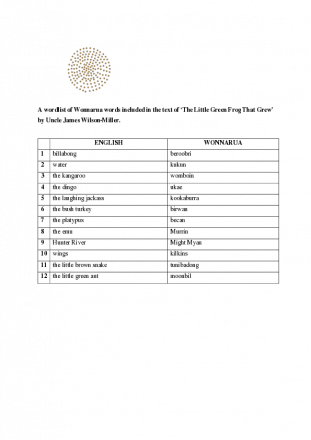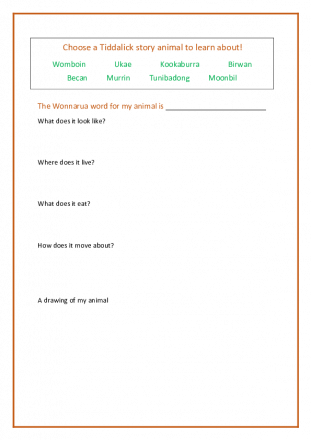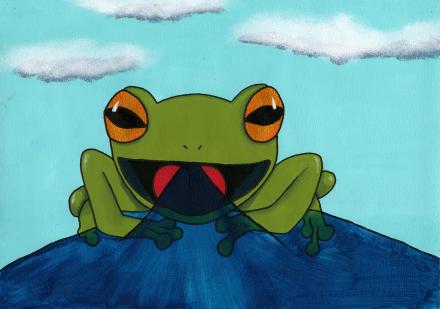Activities for school children (Years 3-4)
Wonnarua language, culture and Country
A unit of work for school children (Years 3-4)
Overview
This unit of work contains ideas and activities for Years 3-4 students to stimulate their awareness and engagement with Wonnarua language and culture. It includes two traditional Wonnarua stories and related writing, geography, research and art activities to support learning about Wonnarua, culture, language and Country. All the activities can be adapted to suit your particular circumstances, whether in a school, home or community setting.
Objectives
The overall objectives of the unit are to:
- Engage students in learning about Wonnarua culture and language through two traditional Wonnarua stories and a range of related activities
- Develop students’ understanding of the connections between language, culture and Country
- Stimulate students’ awareness of the geographic features of Wonnarua country and their understanding of caring for Country
- Stimulate students’ thinking about the impact of colonisation upon country and their role in protecting and caring for Country
- Increase awareness and appreciation amongst non-Indigenous students of Wonnarua culture and language.
Duration: 6-7 lessons
Mukurtu resources used in the unit
- The Tiddalick story by James Wilson Miller
- The Tiddalick word list
- The Tiddalick language cards
- Photo of the Tiddalick rock formation site
- Native animal research template (at end of this unit)
Other resources required throughout the unit
- Images (photos, drawings) of the animals and places referred to in the Tiddalick story
- Access to the Wonnarua Nation Aboriginal Corporation (WNAC) website for use of the interactive map and link to Isis River video: https://wonnarua.org.au/
- Use of computers to access the WNAC interactive map
- Access to library to undertake research
- Materials for making posters, word cards and painting
- Students’ books for writing and drawing.
Activities
1. The Tiddalick story
Sit together in a circle, if possible in a natural outdoor setting but if not in an indoor space. Explain to the group that they are going to hear an old Wonnarua story, and that the Wonnarua are the traditional owners of the land in the Upper Hunter Valley who have lived there for thousands of years. Acknowledge if there are children with Wonnarua heritage in the group.
- The group listens to the audio recording of the story or the educator reads the story.
- After the story talk about the story’s meaning with possible questions including:
- Why was the little frog Tiddalick upset?
- What else could Tiddalick have done besides drinking all the water?
- What else might the animals have done?
- Introduce to the group the idea that old stories and legends often have messages in them about how to treat each other respectfully and care for each other. Ask the group what they think the messages might be in the Tiddalick story – what might it teach young children about treating each other (prompts – sharing, kindness, consequences). Ask the group who can remember any of the Wonnarua names for the animals?
- Say one of the animal names and ask the students if they can remember/guess which animal it is? Repeat for all animals.
- Place the Tiddalick language cards and images of the animals/setting in the centre of the circle. Together the group matches word with image.
- Complete story activity by sharing with the group the Tiddalick site image. Discuss rock features and introduce concept of important places in Wonnarua culture.
Resources required for this activity
Mukurtu resources
- The Tiddalick story by James Wilson Miller
- The Tiddalick word list
- Photo of the Tiddalick rock formation site.
Other resources
- Images (photos, drawings) of the animals and places referred to in the Tiddalick story.
2. Learning more about the native animals in the Tiddalick story
Explain to the students that they have heard a traditional Wonnarua story that included some of the native animals that live on Wonnarua Country. They are now going to learn more about these native animals and their habitat and lifestyles, by choosing one to research and share their learnings with the class.
- Students choose one of the animals from the Tiddalick story.
- Students visit the library and use written and online resources to research their chosen animal – habitat, diet, description.
- Students use the native animal research template to record their findings (alternatively can record in exercise book).
- Using this information, students make posters to display around classroom including native animal information, descriptions and the Wonnarua word for their animal.
- Students can share their posters with the class and talk about what they learned from their native animal research and Wonnarua words they have learned.
- Display posters in the classroom.
Resources required for this activity
Mukurtu resources
- Native animal research template
Other resources required
- Students’ books for writing and drawing
- Access to library to undertake research
- Materials for making posters.
3. Word card making and game
In addition to using the language cards available on the Mukurtu website, students could create their own word cards for the Tiddalick story. A possible approach is:
- Students work in pairs, with each pair provided with a set of blank cards and the Tiddalick word list (each pair could have six words each).
- Students write the Wonnarua word on one side of the card and draw the corresponding image on the other side.
- Students will need to remember the meaning of the Wonnarua word in order to draw the right corresponding image. Educator can assist/prompt students to recall meaning of the words.
- Students decide in their pairs the division of writing and drawing.
- After completing the word cards, students can take turns to show their card image to the class with the other students identifying the image using the Wonnarua word. Alternatively each pair could swap their cards with another pair, and then take turns testing each other on their recall of the Wonnarua word for the animal/setting before flipping the card over to see the image.
Resources required for this activity
- Tiddalick story word list for each pair (six words per pair)
- Blank cards and materials for word writing and illustrating cards.
4. Isis River story
Introduce the video to the class by referring to the Tiddalick story, and then explaining the class is now going to listen to another traditional Wonnarua story.
- The class watches the video and afterwards discusses, with the educator guiding discussion with questions such as:
- What are the men in the video doing?
- Why is it important that water flowed from the tree?
- What did you notice about the men in the video – their dress, body painting, hunting weapons?
This could lead into talking with the children about the Wonnarua people’s lifestyle pre-colonisation, and that they were skilled hunter-fisher-gatherers living in family groups throughout the Upper Hunter Valley. Other themes that could be introduced include the importance of water and the creation of the river system.
Resources required for this activity
- Access to the WNAC website - interactive map and link to Isis River video: https://wonnarua.org.au/map/
- Students’ books for writing and drawing.
5. Learning more about Country and the importance of caring for Country
Explain that the Wonnarua people have lived for thousands of years on this Country and that this is a special place for them. Talk with the group about the ways in which the Wonnarua care for Country.
- Refer to the Tiddalick and Isis River stories, asking the class what they can remember about water in both stories. Ask the students:
- What do you do if you are thirsty, where does your water come from?
- What else do you need water for in your daily life?
- Where did the Wonnarua people get their water from before colonisation?
- What did the Wonnarua people need the river for?
- Compare and contrast water sources available to us now and what would have been available to the Wonnarua pre-colonisation.
- Explain to the class that they are going to look at a map of Wonnarua Country on a website created by the Wonnarua people. Explain that the Wonnarua people have created the website to strengthen their culture and that they are sharing it with other people, both Aboriginal and non-Aboriginal, so that everyone can learn about Australia’s history and culture.
- Access the WNAC interactive website and together look at all the rivers and waterways on Wonnarua Country. Ask the students to locate the Isis River. Read aloud the other river names. If students have access to computers provide time for them to explore the WNAC website.
- Discuss the impact of colonisation on the Hunter River system including limiting Wonnarua people’s access to their water sources, post-colonisation use of rivers for fishing, irrigation and mining and subsequent environmental impact.
Note: This activity could be expanded into a more detailed unit investigating: the significance of the Hunter River system for the local Indigenous people prior to colonisation and the social, environmental and economic impact of colonisation upon the river system. It could also be used to develop students’ mapping skills (understanding keys, scale, contours). Another extension of the unit could involve using the WNAC website more extensively to introduce to the students the themes of Indigenous self determination and cultural revitalisation.
Resources required for this activity:
- Access to the WNAC website - interactive map and link to Isis River video: https://wonnarua.org.au/map/
6. Imagining story and Country through art work
Explain to the class that together they have been learning about Wonnarua stories and about Wonnarua Country. Ask the students to recall what they have learned about the Hunter River system, and its importance for Wonnarua people. Show again the image from the WNAC interactive map of the river system.
- Tell the class they are now going to see some art work based on the map of Wonnarua Country and its rivers.
- Display Cassie Willis’s graphic renderings of Wonnarua Country and discuss the features in the images with students.
- Using these images as stimuli, ask the students to paint a place that is special for them that has a water source; it could be a river, rock pool or beach. Provide students with art materials to depict their special place and ask them to write a few sentences underneath their painting explaining:
- Where is your special place?
- Why it is special?
- How can you care for your special place?
- Display art work around the classroom.
Resources required for this activity
Mukurtu resources
- Cassie Willis art work - water images
Other resources
- Access to the WNAC website - interactive map and link to Isis River video: https://wonnarua.org.au/map/
- Materials for creating paintings
Assessment/Evaluation
- Over the course of the unit the educator could regularly review students’ recall of the Wonnarua words they have learned.
- Educator observes students’ level of interest and engagement with the activities.
NSW Curriculum links
Aboriginal Languages
2.UL.2: Identifies and responds to key words, phrases and simple sentences in context in written Aboriginal languages
2.MBC.1: Recognises the link between culture and a sense of identity
2.MBC.2 Recognises connections between Aboriginal culture, language, land and a sense of identity
English
EN2-7B: Identifies and uses language forms and features in their own writing appropriate to a range of purposes, audiences and contexts
EN2-8B: Identifies and compares different kinds of texts when reading and viewing and shows an understanding of purpose, audience and subject matter
History
HT2-4: Describes and explains effects of British colonisation in Australia
HT2-5: applies skills and historical inquiry and communication
Geography
GE2-1: Examines features and characteristics of places and environments
GE2-2: Describes the ways people, places and environments interact
Visual Arts
VAS2.3: Acknowledges that artists make artworks for different reasons and that various interpretations are possible
VAS2.4: Identifies connections between subject matter in artworks and what they refer to, and appreciates the use of particular techniques.
The wider learning context
Integrate Wonnarua language and culture teaching into other parts of the curriculum by including relevant Wonnarua words and short everyday phrases. For example, the WNAC online dictionary could be used by the educator and also by the students to develop word lists for other books, other lesson content and display around the classroom.
Choose a Tiddalick story animal to learn about!
Womboin Ukae Kookaburra Birwan
Becan Murrin Tunibadong Moonbil
The Wonnarua word for my animal is ________________________
What does it look like?
Where does it live?
What does it eat?
How does it move about?
A drawing of my animal
